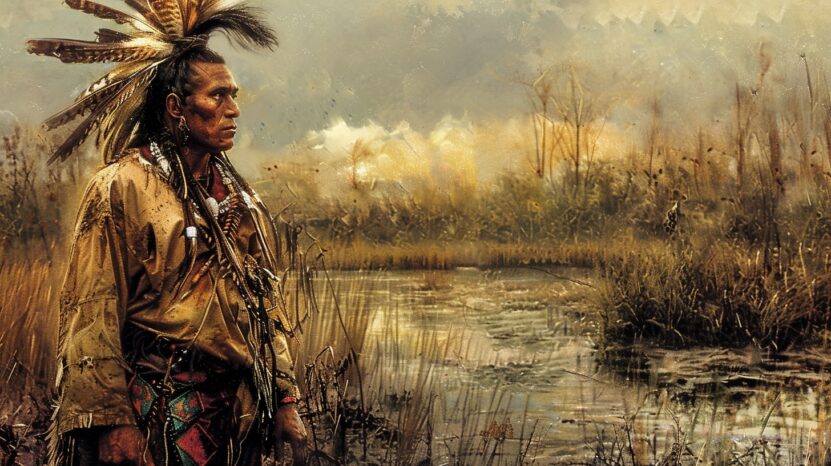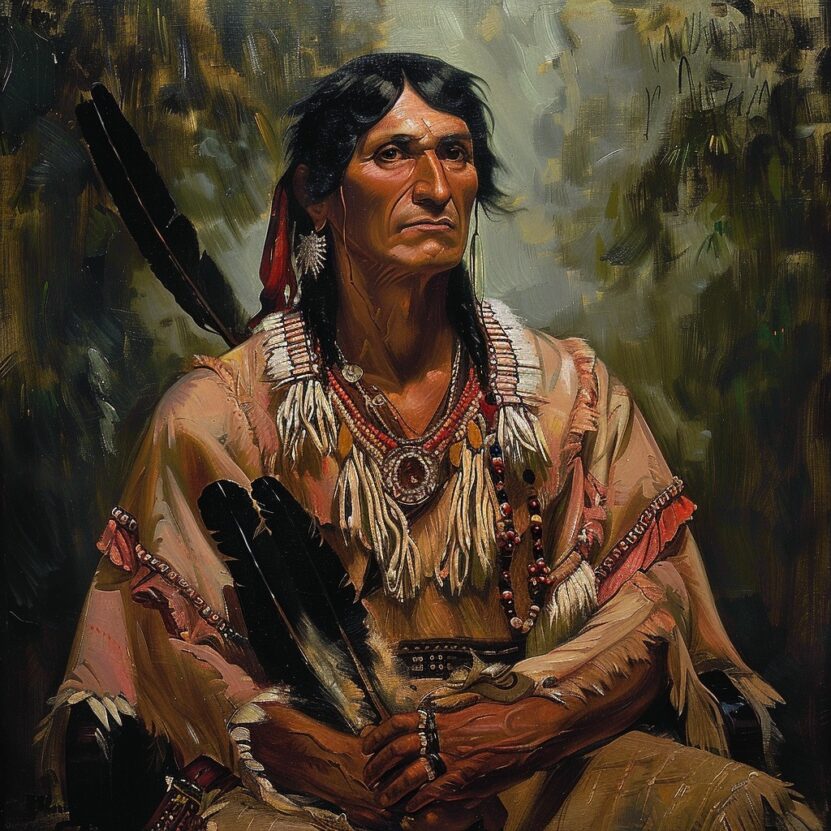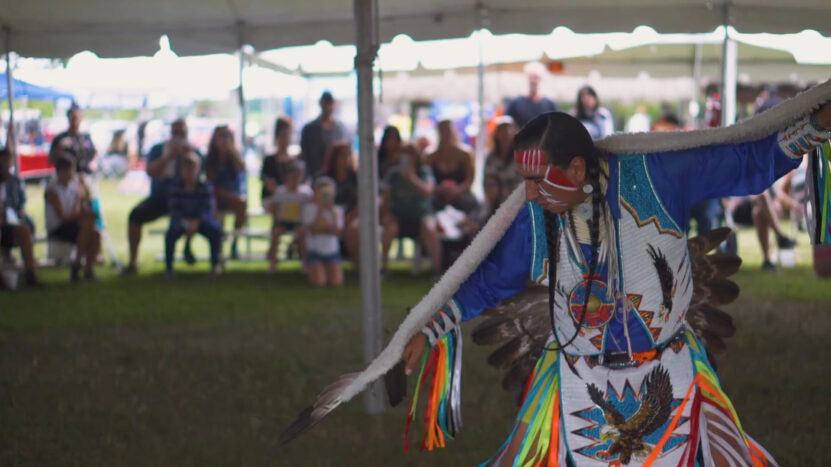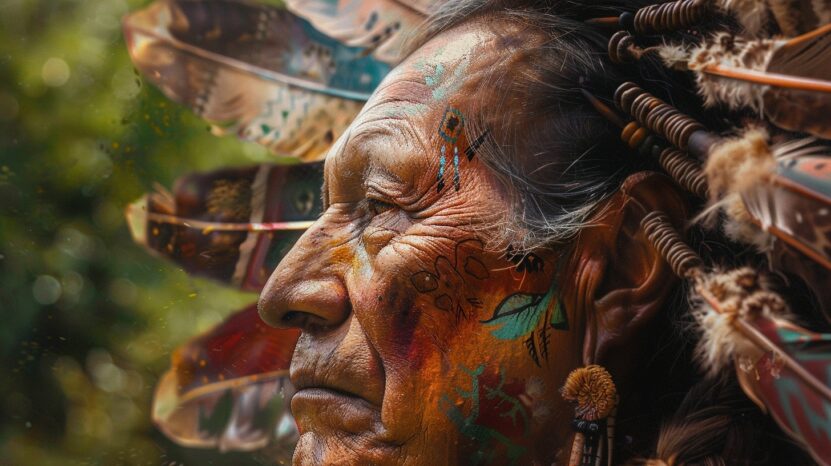The myths that cling to Osceola’s legacy raise intriguing points about historical interpretation and the shaping of cultural heroes. Legends of him knifing a treaty and being a fierce opponent who hated all white people have been contested and scrutinized by historians.
Just like historical figures had to figure out what’s true from what’s exaggerated, the same goes for us today. Take travel agencies, for example. When you’re trying to decide if you can trust a service, like booking a hotel online through a middleman, you really gotta dig deep to make sure it’s legit.
The dramatic capture and subsequent death of Osceola further elevated his status and cemented his place as a potent symbol in American and Native American history.
His representation in popular culture often echoes the sentiments of his time but also adapts to the changing perspectives on indigenous peoples and their history.
Key Takeaways
- Osceola’s life is a blend of documented facts and enduring legends.
- Historical debates continue over the accuracies of Osceola’s portrayed resistance.
- Popular culture adaptations reflect evolving views of Osceola’s significance.
The Life of Osceola
Osceola was a highly influential figure of the Seminole people, known for his leadership during the Seminole Wars and his complex heritage.
Early Years
Osceola was born in the early 1800s to a mixed heritage. His mother, Polly Coppinger, was of Muscogee and European descent. During his early life, Osceola was known as Billy Powell—reflecting his assimilation into European-American culture. The environment he grew up in was a mélange of Native American and European influences, reflected in his upbringing and later life decisions.
Rise to Leadership
As he matured, Billy Powell adopted the name Osceola, which marked his transition into a notable leader among the Seminoles. He gained respect for his charisma and strategic mindset, which led to his ascendancy in the Seminole community. Osceola’s leadership was not through hereditary status but rather through his actions and the support of those who believed in his vision for their people’s future.
Role in the Seminole Wars
Osceola’s legacy is deeply intertwined with the Seminole Wars, where he played a pivotal role as a resistance leader. His opposition to the removal of his people from their lands put him at the forefront of the conflict. His capture under a flag of truce during the Second Seminole War further fueled his legendary status, encapsulating the struggle of the Seminole people during this tumultuous period.
Osceola’s Legacy

Osceola, born Billy Powell, left an indelible mark on American history as a symbol of Native American resistance. His legacy is complex, incorporating cultural significance, diverse historical narratives, and ongoing remembrance.
Cultural Impact
Osceola’s influence extends beyond historical events into the realm of cultural symbolism. He is recognized as a hero among the Muscogee/Creek and Seminole peoples. His image has been widely used in popular culture, appearing in everything from art to literature, often symbolizing resistance against injustice.
Historical Interpretations
The story of Osceola has been the subject of various historical interpretations, each portraying distinct facets of his character and leadership. Scholars have debated his motives, strategy, and the effects of his actions during the Second Seminole War, providing a multifaceted view of his role in American and Native American history.
Modern-Day Remembrance
Today, Osceola’s memory is kept alive through multiple commemorations. Statues, educational institutions, and geographical locations bear his name, ensuring his continued presence in modern consciousness. His grave at Fort Moultrie is a site of remembrance, symbolizing the ongoing struggle for Native American rights and recognition of their contributions to the nation’s history.
The Myths Surrounding Osceola

Osceola, a figure synonymous with resistance and heroism, is enveloped in tales that often blur the lines between fact and fiction.
Myth vs. Reality
The narrative surrounding Osceola’s death illustrates the complex interweaving of myth and reality. Popular belief recounts Osceola’s death during battle; however, historical accounts confirm he died of malaria while imprisoned at Fort Moultrie. References to a more valiant end continue to persist, showcasing our tendency to augment history for a more compelling story.
Another contentious topic is Osceola’s capture. Some sources tell of Osceola’s surrender under a white flag, a symbol of peace and negotiation. Yet, this doesn’t align with the historical evidence which suggests he was captured under a deceitful pretense by General Jesup.
The Creation of an Icon
The forging of Osceola into an iconic figure can be attributed to the narratives created by those who wrote about him posthumously. His heritage, for example, has been a point of much debate. Born Billy Powell, he was often considered a chief among the Seminoles, even though he was not a chief by birthright.
His mixed European and Native American ancestry is frequently overlooked. The romanticized image of Osceola as a pure-blooded Native American warrior ignores the complexity of his identity. This simplification has contributed to his status as an emblematic figure of Native American resistance.
Popular Culture

Osceola has become a symbol of resistance and has been represented across various forms of popular culture.
Literature
Osceola’s role in history has inspired several literary works. He appears as a character in historical fiction, often exemplifying the struggle between Native American tribes and European settlers. His legend has been chronicled in novels and children’s books, capturing the imagination of readers.
Film and Television
The figure of Osceola has been portrayed in film and television, where he is depicted resisting government forces. These dramatizations usually focus on his leadership during the Second Seminole War and serve to introduce him to a wider audience.
Art and Memorabilia
Artistic representations of Osceola can be found in various mediums, from paintings and sculptures to souvenirs and historical reenactments. There are also collectibles and memorabilia that honor his legacy, ranging from stamps to figurines, all contributing to his status as an iconic figure.
Historiography and Research
Osceola, the influential leader of the Seminole during the Second Seminole War, has been a subject of ongoing research and historiographical analysis, shedding light on his life, leadership, and legacy.
Primary Sources
Primary sources on Osceola include historical documents from the 19th century, treaty records, and contemporaneous accounts by those who interacted with him. These documents are indispensable for understanding the context of Osceola’s actions and the perceptions of his contemporaries. Some sources also consist of physical artifacts, such as Osceola’s personal effects, which provide a tangible connection to his life and times.
Scholarly Analysis
Scholars have conducted exhaustive research to reconstruct Osceola’s story. Investigations into his racial origins reveal complex identity issues, as different accounts propose diverse heritage backgrounds. Patricia Riles Wickman’s extensive research provides an in-depth analysis of his personal effects and the significance of his cultural identity.
Current historiographical trends focus on interdisciplinary methods to piece together the narrative of Osceola’s impact and the broader implications of his resistance against U.S. policies.
Frequently Asked Questions
What historical significance did Chief Osceola have?
Osceola played a crucial role in the Second Seminole War, resisting the U.S. government’s attempts to remove the Seminole people from their lands in Florida. His resistance made him a symbol of Native American struggle against U.S. expansion.
What were the notable achievements of Osceola?
Beyond leading the Seminole resistance during the Second Seminole War, Osceola was known for his strategic thinking and ability to unite different factions of the Seminole tribe against common threats.
At what age did Chief Osceola pass away, and what was the cause of his death?
Chief Osceola died at the age of approximately 34 in 1838. He succumbed to illness while he was imprisoned at Fort Moultrie in Charleston, South Carolina.
Can you describe Osceola’s leadership within his tribe?
Osceola was known as a charismatic leader who had a strong influence within his tribe. He was not a formal Seminole chief but was respected and followed due to his leadership skills and courage.
Are there living descendants of Chief Osceola today?
There are individuals who claim descent from Osceola, and given his documented children, it is plausible that living descendants exist today.
What illness ultimately led to Osceola’s demise?
Osceola suffered from malarias, which was the illness that ultimately led to his death while he was under U.S. military custody.
Final Words
Osceola’s legacy as a symbol of Native American resistance and leadership continues to captivate and inspire, challenging historical narratives and shaping cultural perceptions..

